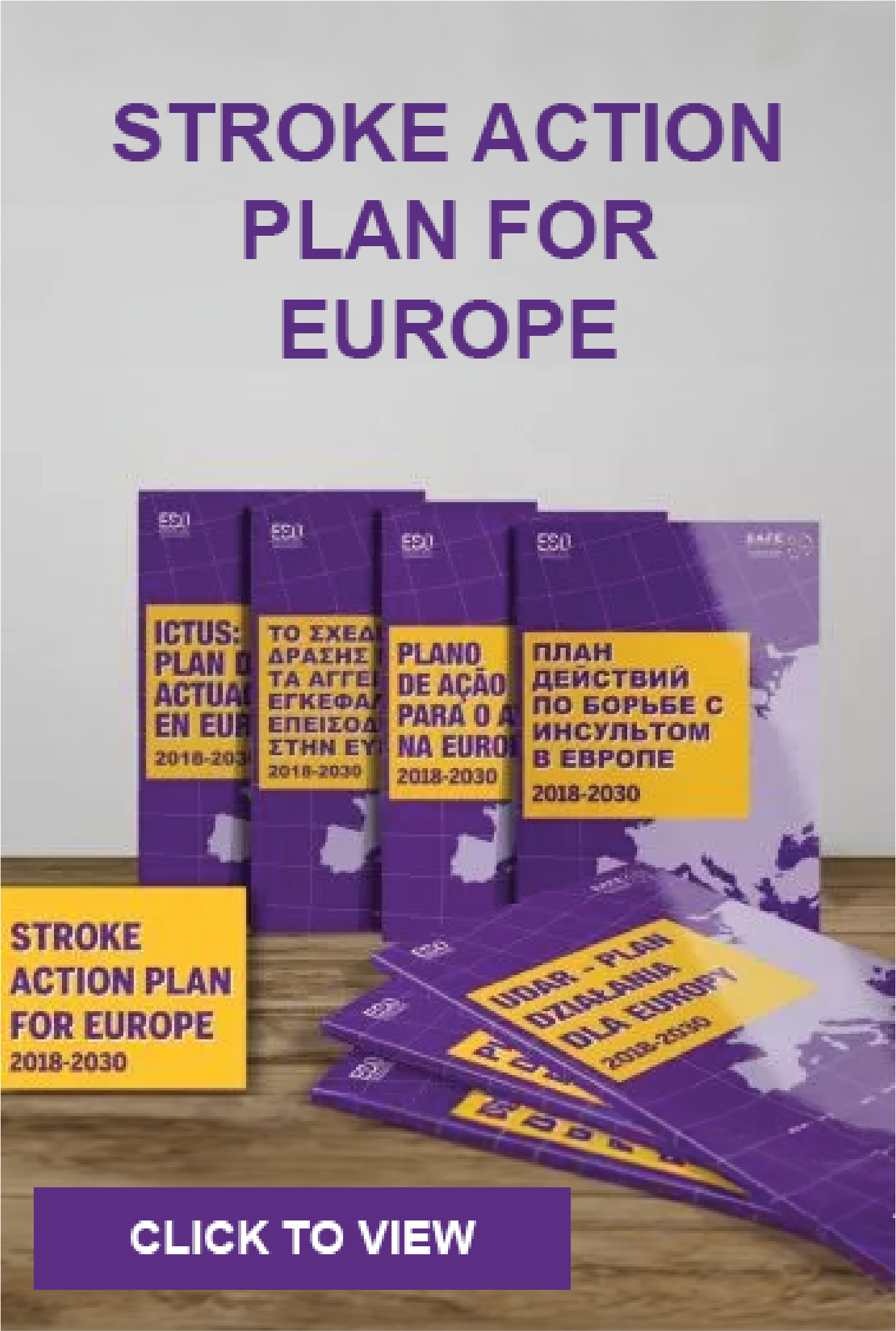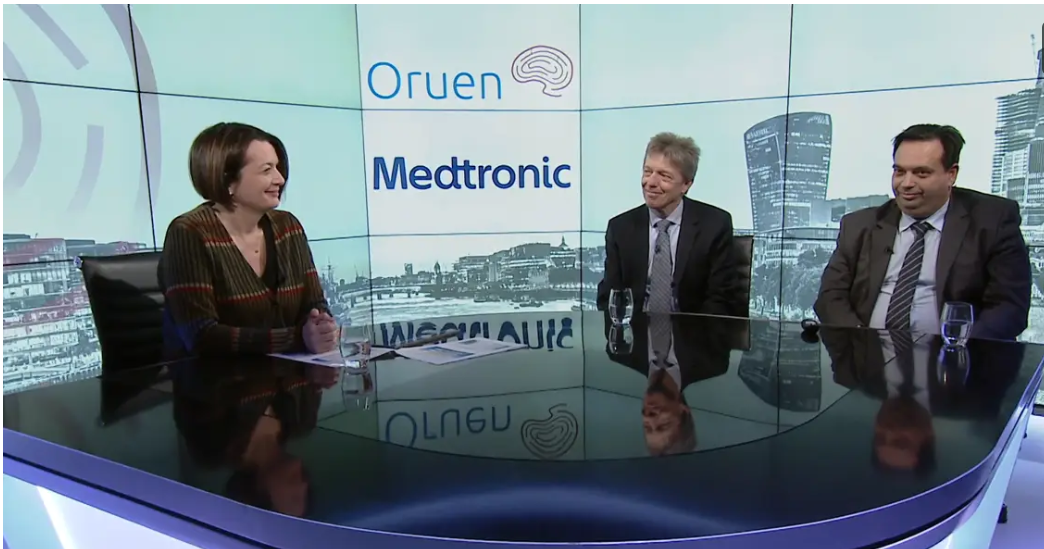
Feb 4, 2020
Professor Valeria Caso, Associate Professor of Neurology, University of Perugia Stroke Unit, Perugia, Italy, Professor Helmut Pürerfellner, Department of Cardiology, Public Hospital Elisabethinen, Linz, Austria and Professor Georgios Tsivgoulis, Associate Professor of Neurology, Second Department of Neurology, National & Kapodistrian University of Athens, Greece discussed the different types of stroke and how it is a major healthcare issue. They also discussed the value of prolonged monitoring in selected ESUS patients, and also some new data that might reconfirm what we already know – that if we have longer monitoring in some of those patients, then we will have even better outcomes.
Learning Objectives
- New evidence and increasing the awareness of atrial fibrillation (AF) in cryptogenic stroke patients.
- Treatment approaches from the guidelines and the latest study evidence.
- AF, stroke, and related symptoms, and why the evidence from the past is important.
- Why ESUS needs prolonged monitoring and how new data may benefit patients.
For accessing the webinar video, please click on the button below:
Oruen Webinar
For further information please visit Oruen website.
This webinar was supported by Medtronic.

Jan 31, 2020
First published on ScenceDaily.com
New research from the Smidt Heart Institute at Cedars-Sinai showed for the first time that women’s blood vessels — including both large and small arteries — age at a faster rate than men’s. The findings, published Wednesday in the journal JAMA Cardiology, could help to explain why women tend to develop different types of cardiovascular disease and with different timing than men.
“Many of us in medicine have long believed that women simply ‘catch up’ to men in terms of their cardiovascular risk,” said Susan Cheng, MD, MPH, MMSc, senior author of the study and director of Public Health Research at the Smidt Heart Institute. “Our research not only confirms that women have different biology and physiology than their male counterparts, but also illustrates why it is that women may be more susceptible to developing certain types of cardiovascular disease and at different points in life.”
Using community-based data amassed from multiple sites across the country, Cheng and her research team conducted sex-specific analyses of measured blood pressure — a critical indicator of cardiovascular risk. The data represented nearly 145,000 blood pressure measurements, collected serially over a 43-year period, from 32,833 study participants ranging in age from 5 to 98 years old.
Because a person’s risk for developing a heart attack, heart failure, or a stroke typically begins with having high blood pressure, Cedars-Sinai researchers combed through their massive data looking for clues and patterns regarding how blood pressure starts to rise. Then, instead of comparing the data from men and women to each other, investigators compared women to women and men to men.
This approach allowed investigators to identify that the progression and evolution of women’s vascular function is very different than for men. In fact, women showed signs of blood pressure elevation much earlier in life than men.
“Our data showed that rates of accelerating blood pressure elevation were significantly higher in women than men, starting earlier in life,” said Cheng, the Erika J. Glazer Chair in Women’s Cardiovascular Health, who also serves as director of Cardiovascular Population Sciences at the Barbra Streisand Women’s Heart Center. “This means that if we define the hypertension threshold the exact same way, a 30-year old woman with high blood pressure is probably at higher risk for cardiovascular disease than a man with high blood pressure at the same age.”
Christine Albert, MD, MPH, founding chair of the newly established Department of Cardiology at the Smidt Heart Institute, says this new research should help guide clinicians and researchers to think differently when it comes to treating and studying women and their cardiovascular health.
You can read the full article here.
Image: Pixabay
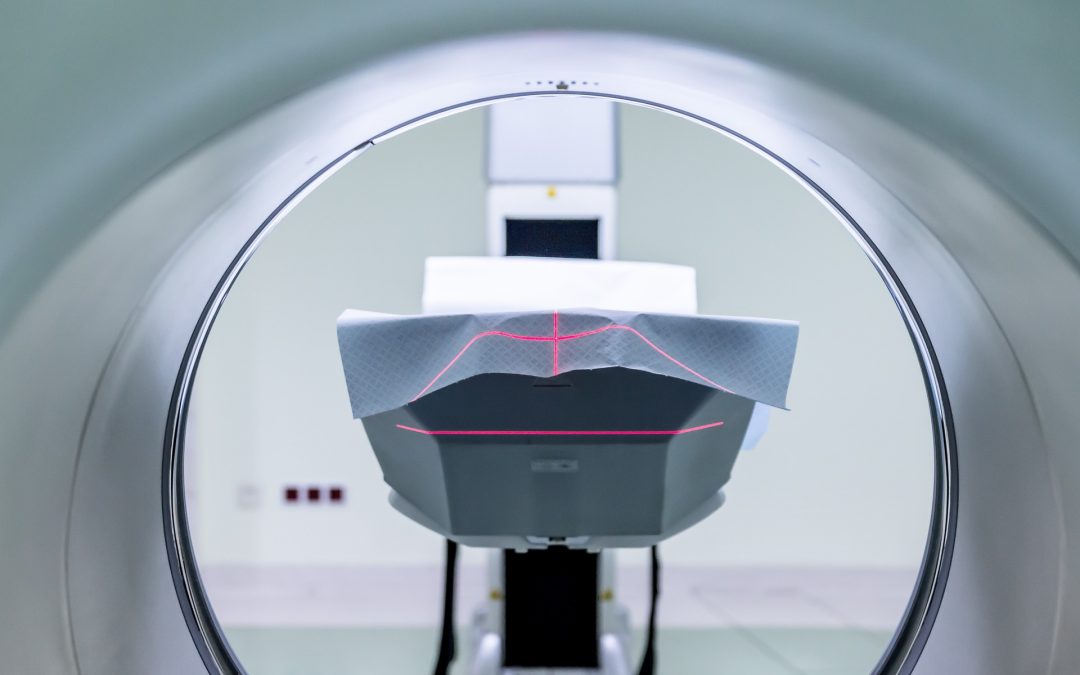
Jan 24, 2020
First published on ScienceDaily.com
It’s been almost a quarter century since the first drug was approved for stroke. But what’s even more striking is that only a single drug remains approved today.
In a publication appearing this month in the journal Translational Stroke Research, animal scientists, funded by the National Institutes of Health, present brain-imaging data for a new stroke treatment that supported full recovery in swine, modeled with the same pattern of neurodegeneration as seen in humans with severe stroke.
“It was eye opening and unexpected that you would see such a benefit after having had such a severe stroke,” said Steven Stice, Georgia Research Alliance Eminent Scholar and D.W. Brooks Distinguished Professor in the University of Georgia’s College of Agricultural and Environmental Sciences. “Perhaps the most formidable discovery was that one could recover and do so well after the exosome treatment.”
Stice and his colleagues at UGA’s Regenerative Bioscience Center report the first observational evidence during a midline shift — when the brain is being pushed to one side — to suggest that a minimally invasive and non-operative exosome treatment can now influence the repair and damage that follow a severe stroke.
Exosomes are considered to be powerful mediators of long-distance cell-to-cell communication that can change the behavior of tumor and neighboring cells. The results of the study echo findings from other recent RBC studies using the same licensed exosome technology.
Many patients who suffer stroke exhibit a shift of the brain past its center line — the valley between the left and right part of the brain. Lesions or tumors will induce pressure or inflammation in the brain, causing what typically appears as a straight line to shift.
“Based on results of the exosome treatment in swine, it doesn’t look like lesion volume or the effects of a midline shift matter nearly as much as one would think,” said Franklin West, associate professor of animal and dairy science in the UGA College of Agricultural and Environmental Sciences. “This suggests that, even in some extremely severe cases caused by stroke, you’re still going to recover just as well.”
You can read the full article here.
Image: Pixabay
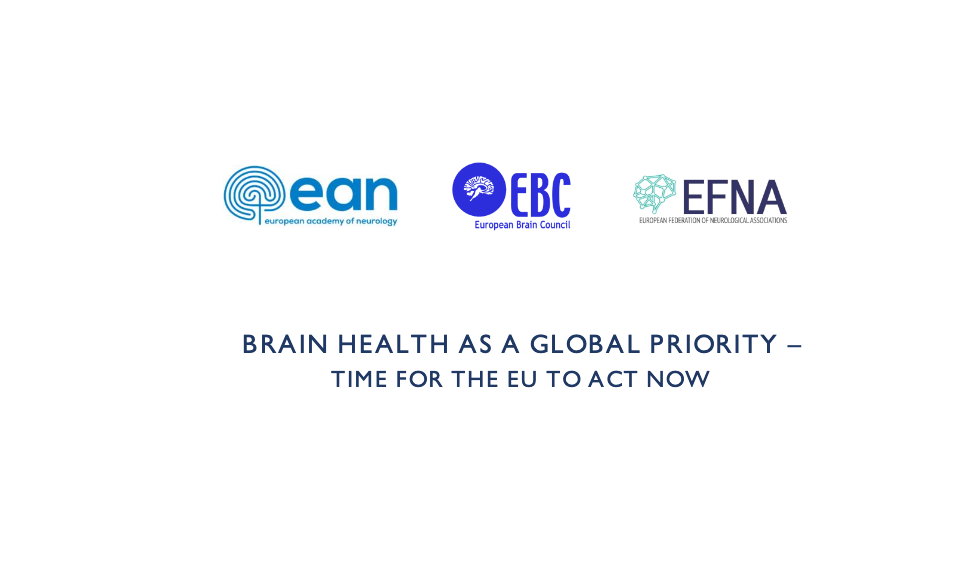
Jan 24, 2020
First published on EFNA website – Event announcement and invitation
On 18 February 2020, EFNA together with EBC and EAN, will hold the event “Brain Health as a Global Priority – Time for the EU to Act Now” in the European Parliament, Brussels from 11am to 1pm in Room 6Q1, hosted by Jarosław Duda, EPP.
Follow this link to register via EFNA website.
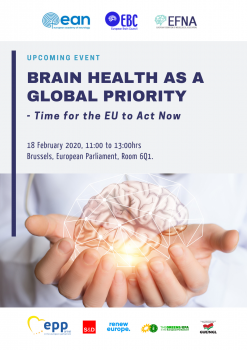 The event is held under the patronage of Members of the European Parliament [EP]:
The event is held under the patronage of Members of the European Parliament [EP]:
- Ewa Kopacz, Vice President of the EP, European People’s Party [EPP]
- Mairead McGuinness, Vice President of the EP, European People’s Party [EPP]
- Miriam Dalli, Vice-Chair, Group of the Progressive Alliance of Socialists and Democrats [S&D]
- Frédérique Ries, Vice-Chair, Renew Europe [RE]
- Kateřina Konečná, European United Left–Nordic Green Left [GUE/NGL]
- Tilly Metz, Group of the Greens/European Free Alliance [EFA]
The event looks to explore the following:
Is brain health a global priority?
In the Political Declaration on Non-Communicable Diseases (NCDs), which arose from the United Nations (UN) High-Level Meeting on NCDs in 2018, all Governments recognized that ‘mental disorders and other mental health conditions, as well as neurological disorders, contribute to the global burden of NCDs. It resulted in adding mental and neurological health as the ‘5th NCD’, complementing global efforts to combat cancer, CVD, diabetes and chronic respiratory diseases. This has been reinforced in the recent 2019 UN Declaration on the Universal Health Coverage, where ‘mental disorders and other mental health conditions as well as neurological disorders’ have been identified as an ‘essential component of UHC’. Additionally, the World Health Organisation (WHO) is also now building a new Brain Health team to operate from its headquarters in Geneva. The question now is how can we ensure this progress can be translated into policy action at EU and member state level?
You can access more information and agenda by following this link.

Jan 15, 2020
We are delighted to share with you a report from the German Stroke Foundation about their key activities between July and December 2019. We hope it will inspire you and your organisation for activities in your country.
World stroke day: “Every step counts”

Miriam_Mashkoori, World Stroke Day 2019
Statistically 25 percent of the worlds population gets a stroke. This also means: 3 out of 4 people do not get a stoke!
Around World Stroke Day (October 29th) the German Stroke Foundation raised awareness for stroke-prevention with the slogan “every step counts”. Many papers published the press release with tips for a healthier lifestyle, radio-stations aired an interview with the foundations prevention-expert Miriam Mashkoori. On Facebook people explained how they lost weight or managed to quit smoking to motivate other Facebook-users to live a healthier life.
Summer Camp for children and their families
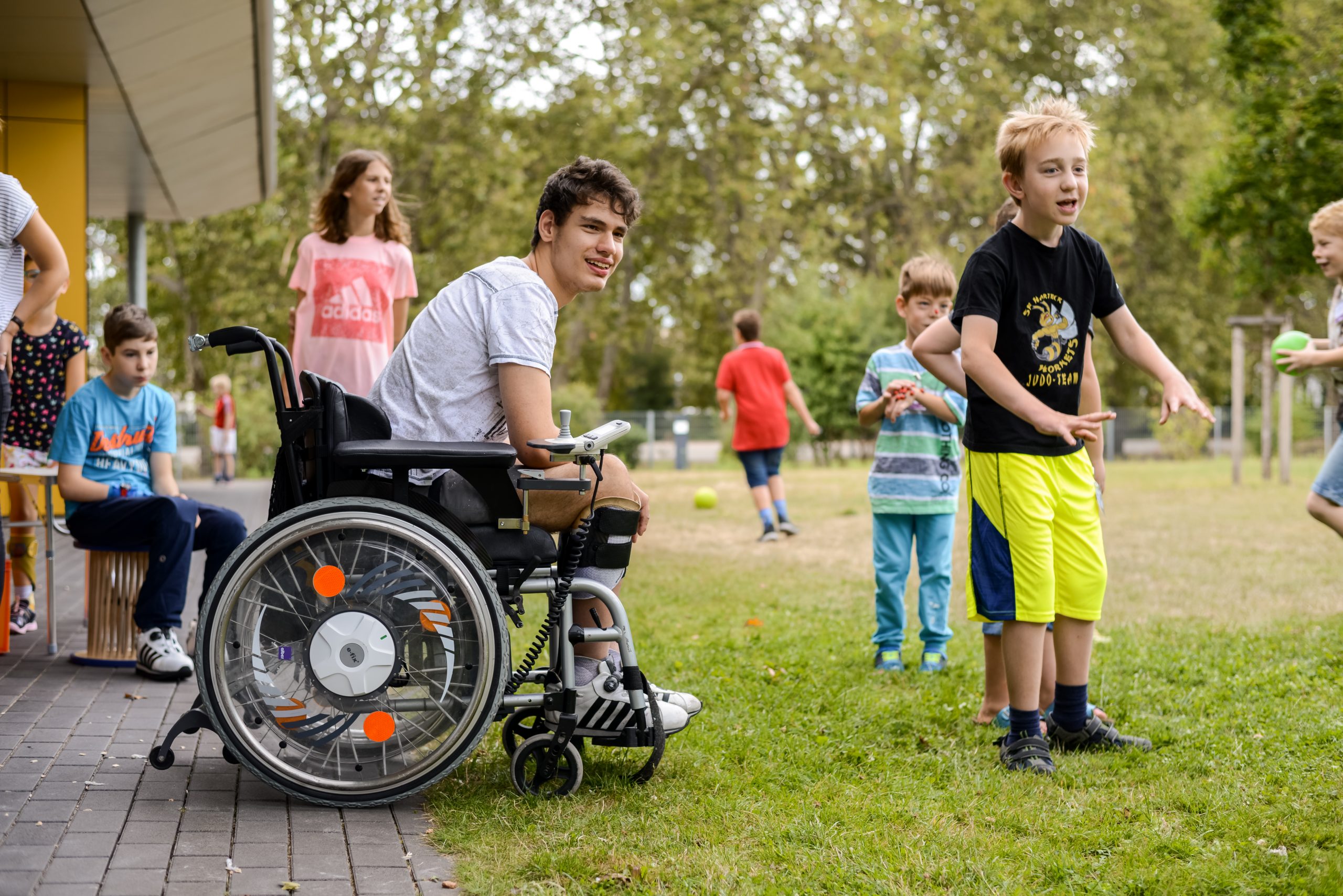 How will my child develop? How will it do in Kindergarten or school? How do we cope with social challenges and which therapies are best with for our child? The diagnosis “stroke” raises many questions – especially when a child is affected. The three day “Summer Camp” offered families with a child affected by stroke an opportunity for an informative and fun-filled weekend. Experts answered questions, psychologists helped developing new perspectives, singer Patricia Kelly gave an exclusive concert and former world-class Wrestler Alexander Leipold offered sport-activities for the children.
How will my child develop? How will it do in Kindergarten or school? How do we cope with social challenges and which therapies are best with for our child? The diagnosis “stroke” raises many questions – especially when a child is affected. The three day “Summer Camp” offered families with a child affected by stroke an opportunity for an informative and fun-filled weekend. Experts answered questions, psychologists helped developing new perspectives, singer Patricia Kelly gave an exclusive concert and former world-class Wrestler Alexander Leipold offered sport-activities for the children.
Tea Time with Liz Mohn
The foundation´s president and founder Liz Mohn invited stroke survivors and supporters of the foundation for a Tea Time. She met and spent a wonderful afternoon with people who were especially engaged in our foundation´s activities.
Workshop for young stroke-survivors
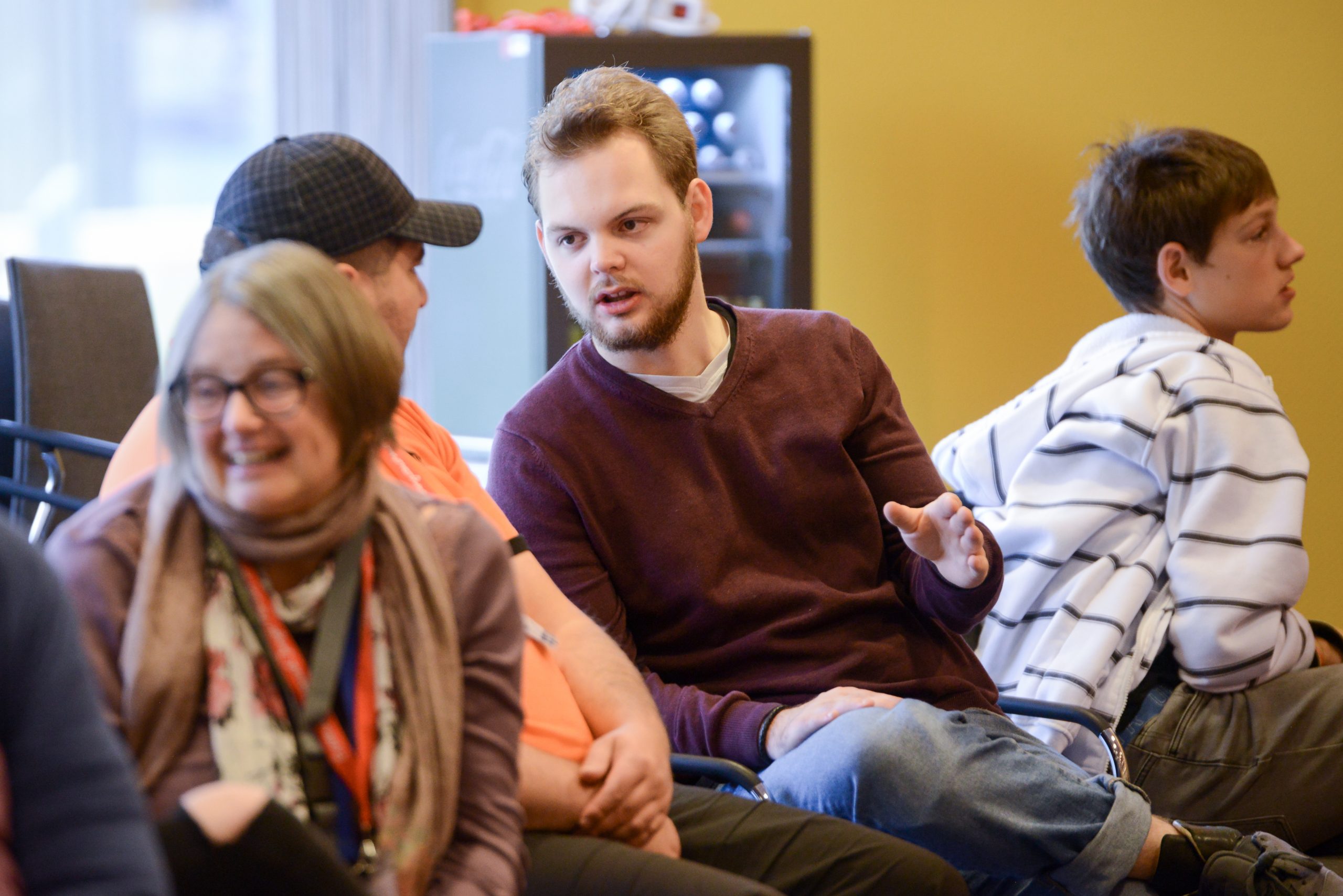 A stroke affects every aspect of life. Young survivors are even in a special situation. They want to return to work, build or maintain relationships and live an independent life – which is not always possible. In a four-day workshop they had the opportunity to talk to psychologists and doctors and to exchange their own experiences. Word-class Mountainbiker Peter Schermann talked about his return into sports after his stroke.
A stroke affects every aspect of life. Young survivors are even in a special situation. They want to return to work, build or maintain relationships and live an independent life – which is not always possible. In a four-day workshop they had the opportunity to talk to psychologists and doctors and to exchange their own experiences. Word-class Mountainbiker Peter Schermann talked about his return into sports after his stroke.
Public talk about reintegration in working life
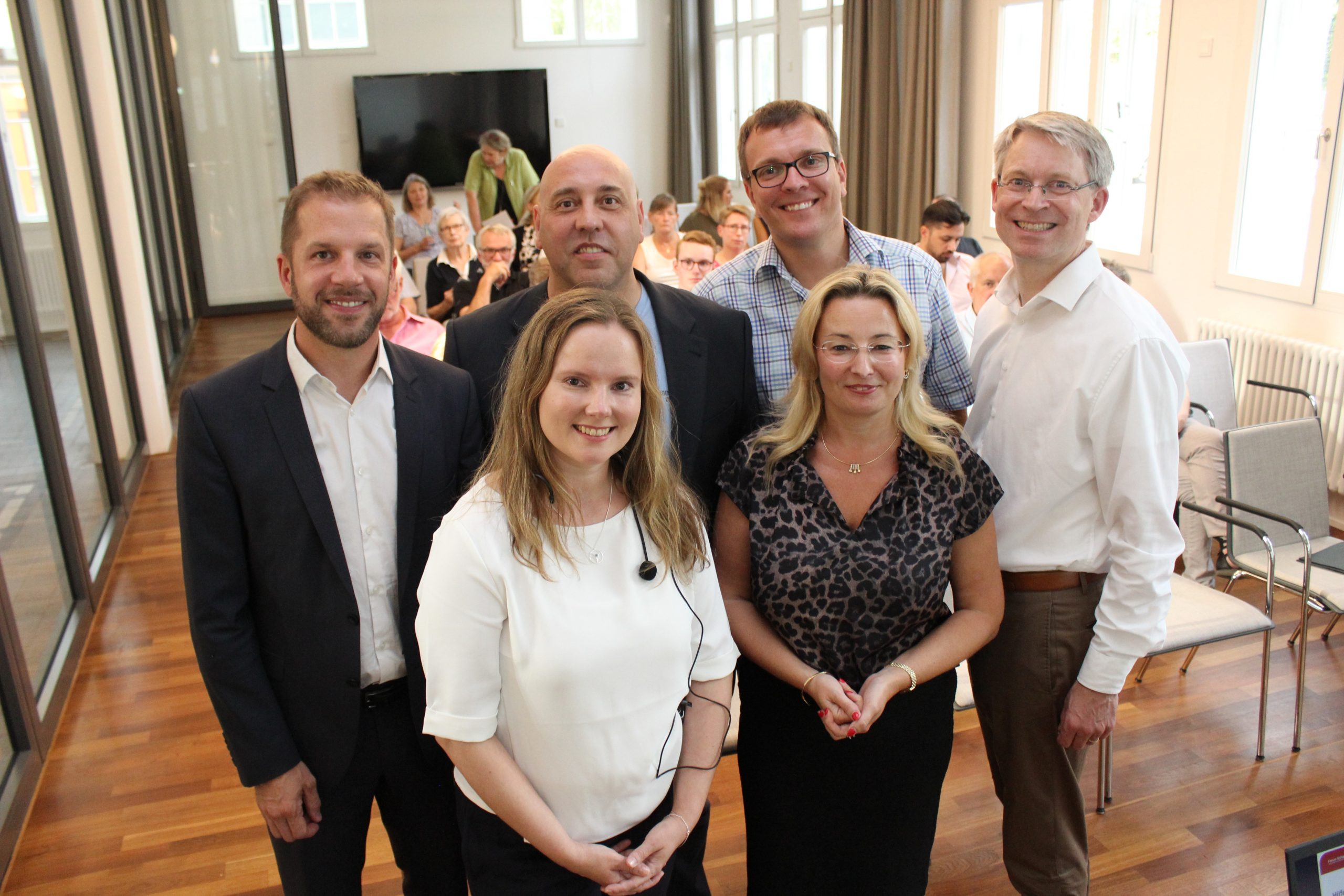
After an accident or an illness it is often hard to return to work. Some might not be able to work full hours anymore, others might have to find a completely different job. A staff member of the employment office, an integration expert and a coach for job applications informed about opportunities to get back to work at the event “Forum Schlaganfall (Stroke Forum)” at the German Stroke Foundation in Gütersloh.
Politican Andrea Milz visits the Stroke Foundation
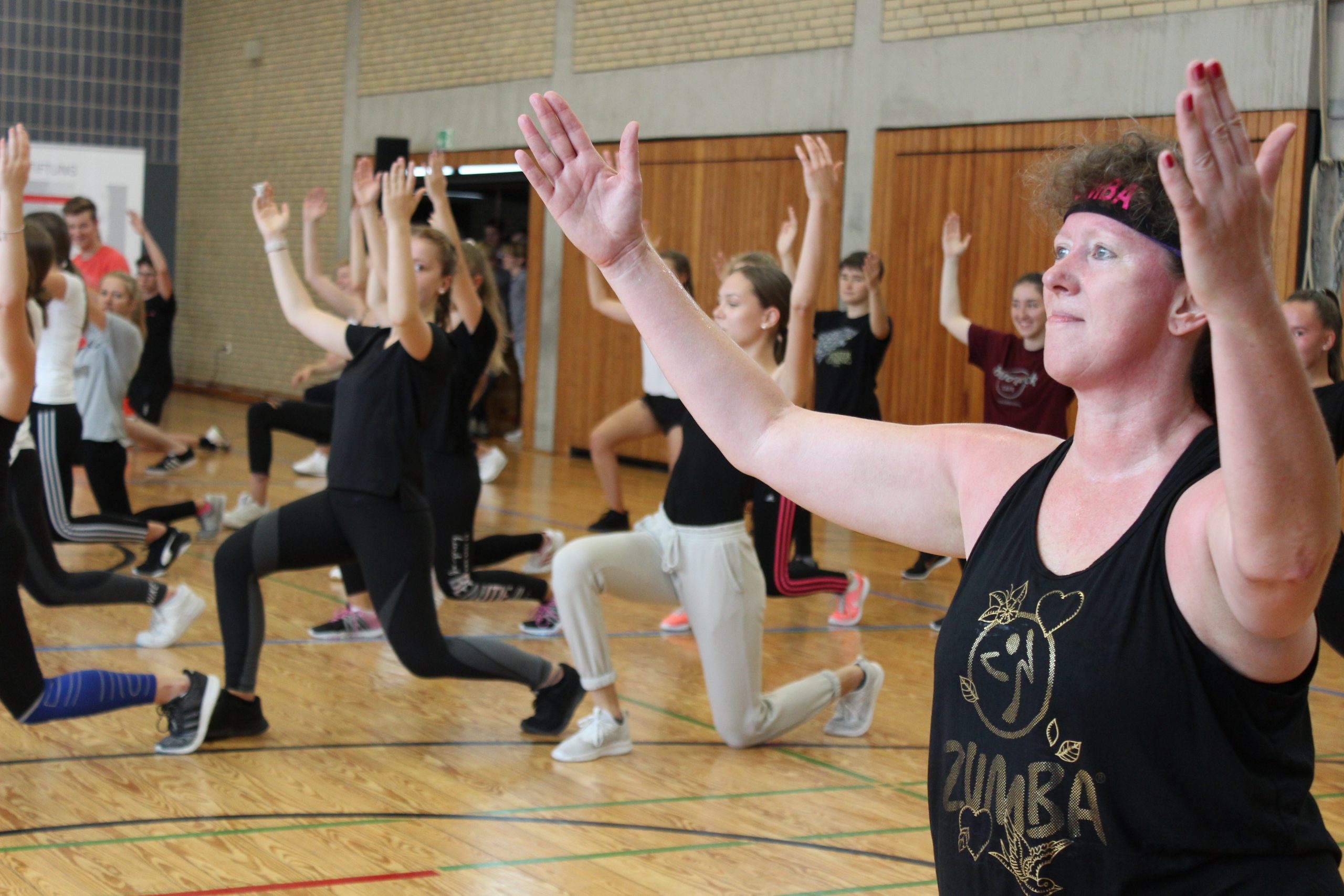
Andrea Milz
The North Rhine Westphalian secretary of state for sports and volunteering, Andrea Milz, visited the German Stroke Foundation to talk about the volunteer-project “stroke helpers”.
As a certified Zumba-trainer she also gave a Zumba-lesson at the local High School. The High School offers optional medicine-classes for its students and cooperates with the foundation.
Speakers of self support groups meet
Speakers of self support groups do not only organise meetings and events for their groups. But they also need to know about relevant changes in law, new therapies or other important aspects about stroke. This is why the foundation offers workshops for speakers of self support groups all over Germany.
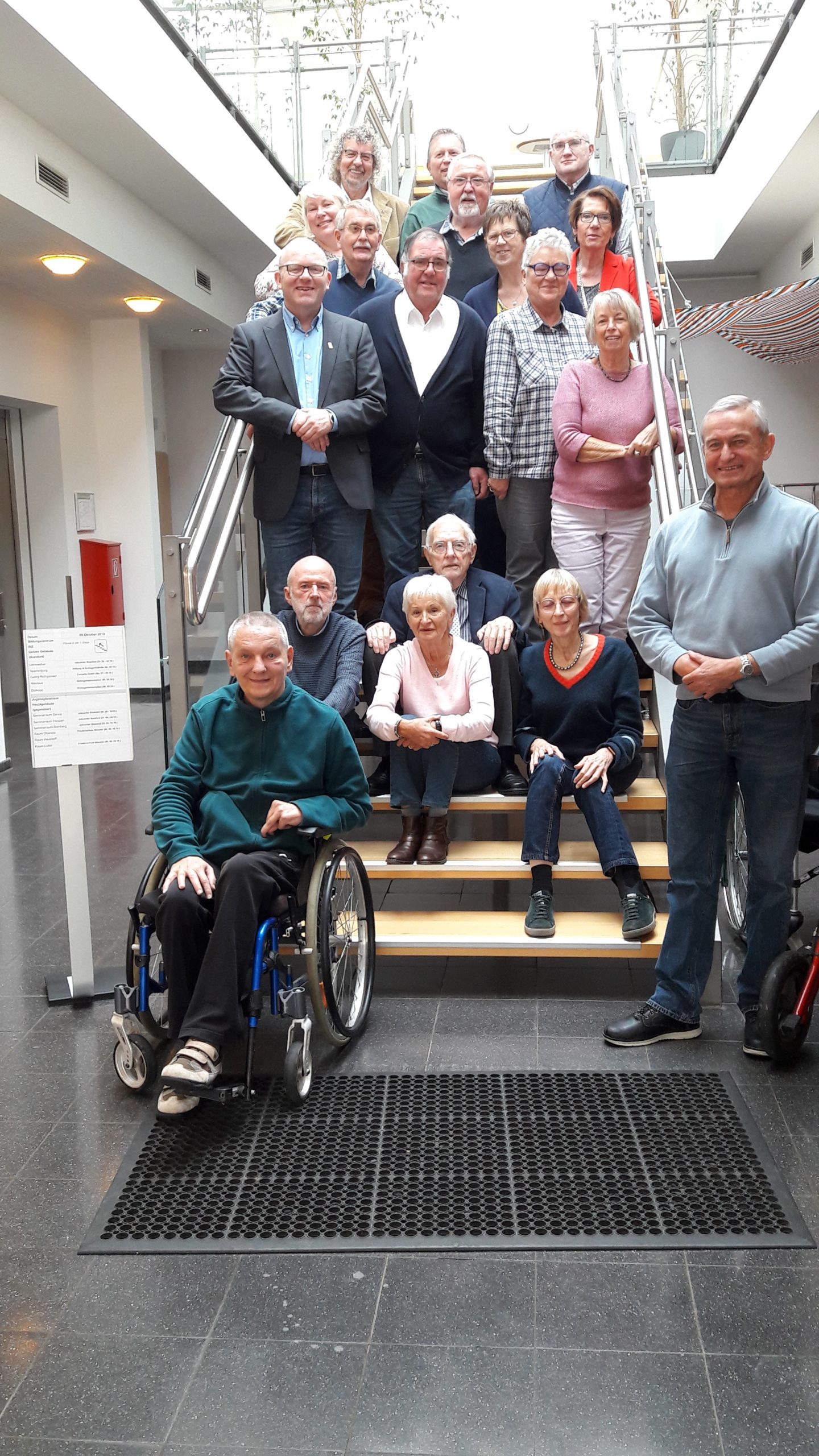
Cooperation with TV-show “Unter uns” ends

Patrick Müller
One of the main characters in the popular TV series “Unter uns” has had a stroke in one of the episodes in May. According to the storyboard lawyer Tobias, played by actor Patrick Müller, suffered from hemiplegia and severe speech problems. The team and cast of “Unter uns” cooperated with the German Stroke Foundation in order to create a realistic storyline. The cooperation know officially ended. The fan-club donated more than 1400 Euros for the foundation.
Experts meet to learn about stroke in children
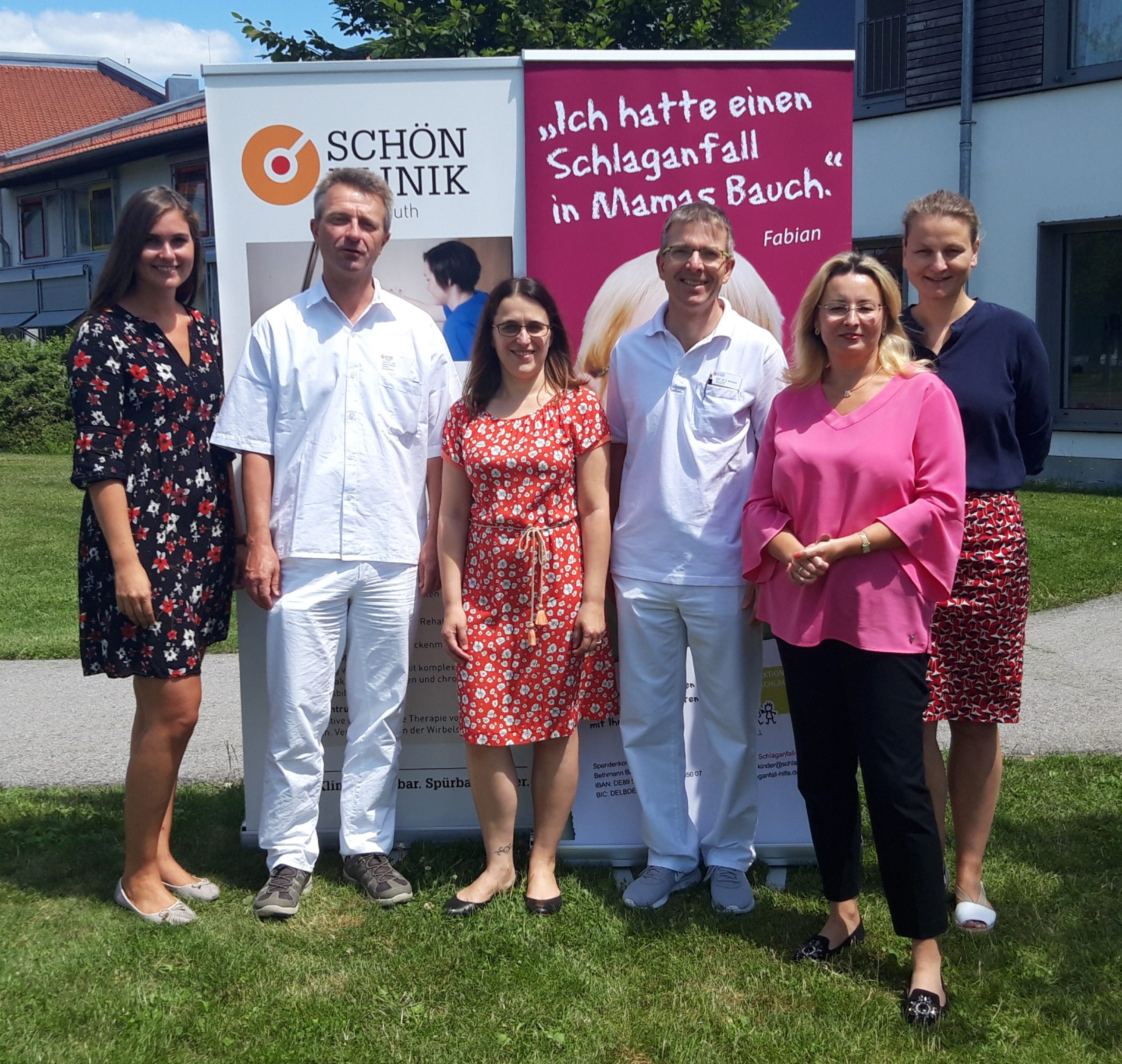 Not many people know that children can have a stroke. Even experts like podiatrists or therapists often don’t have sufficient information about the topic. The German Stroke Foundation wants to change this by inviting experts to learn more about child stroke. More than 40 doctors and other experts met in Bavaria in 2019.
Not many people know that children can have a stroke. Even experts like podiatrists or therapists often don’t have sufficient information about the topic. The German Stroke Foundation wants to change this by inviting experts to learn more about child stroke. More than 40 doctors and other experts met in Bavaria in 2019.
Photos: German Stroke Foundation, 2019
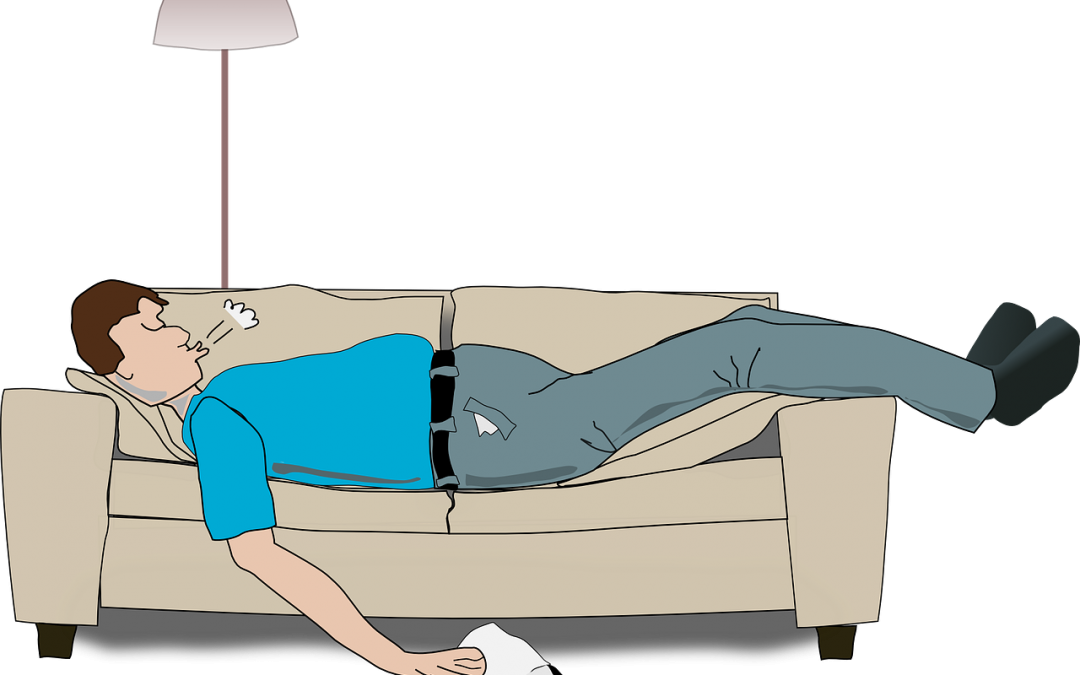
Jan 10, 2020
First published on ScienceDaily.com
Middle-aged adults with high blood pressure, Type 2 diabetes, heart disease or stroke could be at high risk for cancer and early death when sleeping less than six hours per day, according to new research published in the Journal of the American Heart Association, the open access journal of the American Heart Association.
“Our study suggests that achieving normal sleep may be protective for some people with these health conditions and risks,” said lead study author Julio Fernandez-Mendoza, Ph.D., associate professor at Pennsylvania State College of Medicine and sleep psychologist at the Sleep Research & Treatment Center of the Penn State Health Milton S. Hershey Medical Center in Hershey, Pennsylvania. “However, further research is needed to examine whether improving and increasing sleep through medical or behavioral therapies can reduce risk of early death.”
Researchers analyzed data of more than 1,600 adults (20 to 74 years old, more than half women) from the Penn State Adult Cohort who were categorized into two groups as having stage 2 high blood pressure or Type 2 diabetes and having heart disease or stroke. Participants were studied in the sleep laboratory (1991-1998) for one night and then researchers tracked their cause of death up to the end of 2016.
Researchers found:
Of the 512 people who passed away, one-third died of heart disease or stroke and one-fourth died due to cancer.
People who had high blood pressure or diabetes and slept less than 6 hours had twice the increased risk of dying from heart disease or stroke.
People who had heart disease or stroke and slept less than 6 hours had three times the increased risk of dying from cancer.
The increased risk of early death for people with high blood pressure or diabetes was negligible if they slept for more than 6 hours.
You can read the full article here.
Image: Pixabay.com

Jan 7, 2020
First published on ScienceDaily.com
A team of New Jersey stroke researchers has linked recovery of reading and language competence with cerebral blood flow in the left reading network. Their findings may contribute to new approaches to identifying and treating reading deficits after stroke. The open access article, “Cerebral perfusion of the left reading network predicts recovery of reading in subacute to chronic stroke” was epublished on August 26, 2019 in Human Brain Mapping. The authors are Olga Boukrina, PhD, and A.M. Barrett, MD, of Kessler Foundation, and William Graves, PhD, of Rutgers, the State University of New Jersey.
Despite the fundamental role of reading ability in everyday living, little research has been conducted on patterns of reading recovery after stroke, or the development of interventions to improve reading outcomes. In this study of left-brain stroke, a team of New Jersey scientists examined patterns of cerebral perfusion bilaterally, including left and right networks of brain areas important for healthy reading, the area surrounding the stroke lesion, and the corresponding contralateral area.
They enrolled 31 participants during inpatient rehabilitation, within 5 weeks of left-sided stroke. All underwent functional magnetic resonance imaging, psychometric testing, neurological examination and tests for phonological, orthographic and semantic impairments. Fifteen participants had follow-up studies at 3 months post stroke. Analysis of data from the subacute and chronic phases showed that recovery of reading and language competence correlated with increases in cerebral blood flow in the left reading network.
You can read the full article here.
Image: Pixabay.com
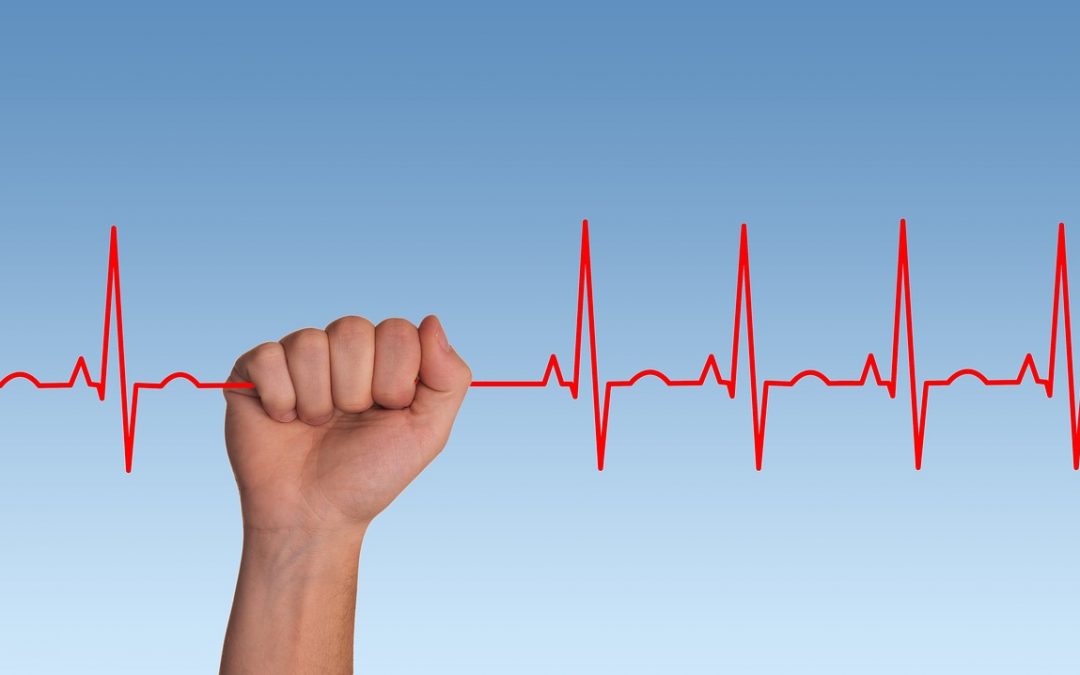
Jan 6, 2020
Source: European Journal of Arrhythmia & Electrophysiology. 2019;5(2):77–81
Authors: Kamal Kishor , Devendra Bisht , Sanjay Kalra
Abstract
Atrial fibrillation (AF) is one of the major causes of stroke, heart failure, sudden death and cardiovascular morbidity in the world. Management of AF, its risk factors and complications demands huge cost. The frequent hospitalisations, haemodynamic abnormalities, and thromboembolic events related to AF put a huge emotional and monetary burden on patients, so preventive strategies will be a cost-effective means of reducing this burden. Primordial prevention (i.e., intervention prior to onset of disease risk factors) should be implemented by the government, along with the food industry, to educate the public regarding the importance of a healthy diet and adherence to it. Primary prevention should focus on halting the onset of AF in targeted populations who carry risk factors for development of AF. The strategy at the secondary-prevention level includes optimal control of rate or rhythm either by anti-arrhythmic drugs or catheter ablation. Every effort should be made to reduce the incidence of ischaemic stroke by using optimal oral anticoagulation, devices or surgical closure of left atrial appendage. Tertiary level prevention should focus on the management of complications incurred as a result of AF, such as ischaemic stroke, heart failure or asymptomatic left ventricular dysfunction. Since management of AF demands a huge economic burden and the line between thrombotic complications and bleeding complications is a thin one; over-diagnosis and overtreatment of AF should be avoided. The ultimate aim of quinary prevention is to sensitise the physician to follow evidence-based medicine and to get rid of populated myth. This current review summarises a stepwise preventive strategy for AF from the primordial level to the quinary level.
You can read the full article in the latest exciting issue of European Journal of Arrhythmia & Electrophysiology – Volume 5 Issue 2 by clicking here.
Image: Pixabay.com
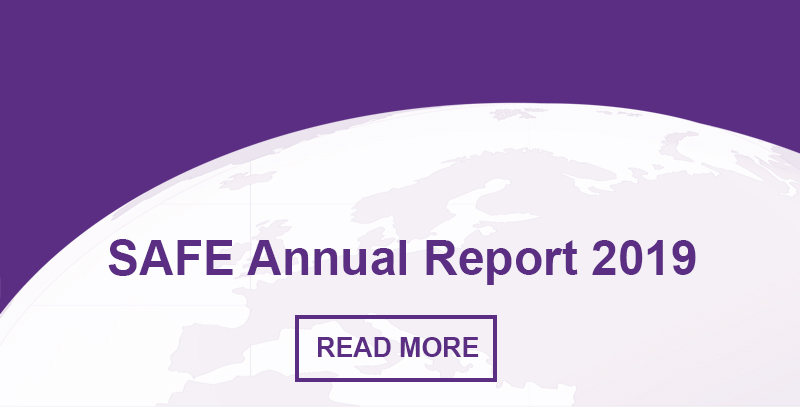
Jan 5, 2020
You can access and download the SAFE Annual Report by clicking on this button below
SAFE Annual Report 2019
In addition, please see below the message of the President of SAFE, Jon Barrick:
This has been a busy and exciting year for our organisation, especially in terms of advocating on pan-European level. We have continued work around the Stroke Action Plan for Europe, forming an implementation committee with the European Stroke Organisation. We held a seminal event at the EU Parliament raising the profile of stroke more than ever before, engaging with the Deputy Director General of the EU’s DG Sante and the EU Committee of the Regions. Through our funding of Oxford University’s project on the economic impact of stroke, we have produced up to date and compelling evidence about the cost of stroke in Europe. With all this accomplished, we continue to press ahead, as we have now completed the third and final year of the research which will provide us with vital European and country specific data on the future economic impact of stroke and power of interventions. The Economic Impact of Stroke in Europe report will be launched in full at the Joint World Stroke Organisation/European Stroke Organisation conference in Vienna in May 2020.
We have continued with the Angels project to produce vital information booklets on stroke to distribute to patients and families while in hospital. We have provided this information in 15 different languages to ensure that more people across Europe can use our materials to improve the lives of stroke survivors.
We continue our educational work with those who wish to understand stroke support organisations and become advocates for better care through our online teaching and learning tool SSOFT, and our regional and working conferences. A particular highlight for me in 2019 was the concrete evidence of the value of our partnership orientation, our Industry partners have been very supportive again, our outreach to ESO has been reciprocated, and we continue to see the number of SSO’s grow, and then become members of SAFE. Yet again we go into a new year with record membership which bodes well for the future.
As SAFE goes from strength to strength in activities to reduce the number and effects of strokes, the Board must also ensure the long-term sustainability of SAFE. The Board has achieved much of its work through dedicated voluntary time but has recognised that this needs to be added to by full
time paid staff. The Board agreed that SAFE required more permanent leadership to drive forward and to achieve our goals. I am delighted to let you know that we recruited our first Director General this year and I know you will all join me in welcoming Arlene Wilkie into the SAFE family.
In 2019, we have been able to deliver many significant achievements because of our close working community. I would like to thank those that have worked with and for SAFE this year, and to the members and sponsors who have supported us practically and financially. This next year is my last as President and I am looking forward to ensuring we have a solid 2020 of achievement to strengthen the long-term sustainability of all stroke support organisations in Europe.
Jon Barrick
SAFE President
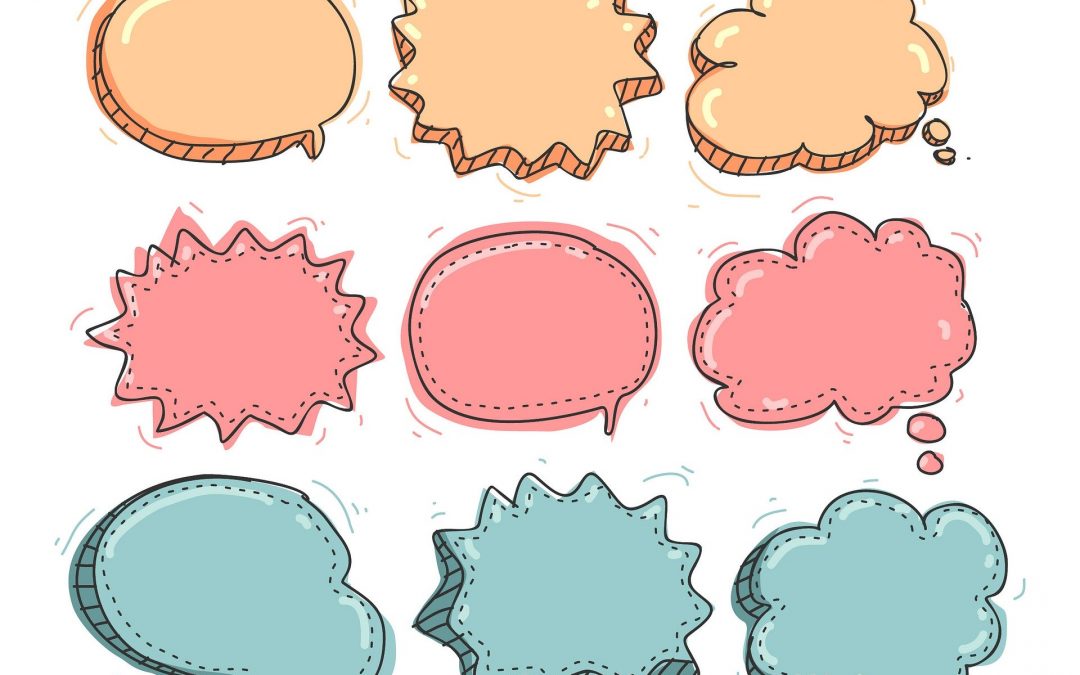
Dec 31, 2019
First published on ScienceDaily.com
In an article in Brain, researchers at the Medical University of South Carolina (MUSC) and elsewhere report which brain regions must be intact in stroke survivors with aphasia if they are to perform well in a speech entrainment session, successfully following along with another speaker.
Aphasia is the inability to speak, write or understand spoken or written language. One of the main causes of aphasia is stroke, the third leading cause of death in the U.S. About one in three stroke survivors develops aphasia.
Patients with non-fluent aphasia speak in short, halting, telegraphic sentences and have trouble forming their words. However, they often understand language relatively well.
“Speech entrainment is asking the person to repeat in real time what they hear and see, or in other words to copy the speech of another speaker,” said Leonardo Bonilha, M.D., Ph.D., who led the study. Bonilha is the SmartState® Endowed Chair for Brain Imaging and an associate professor in the Department of Neurology at MUSC.
Bonilha and Janina Wilmskoelter, Ph.D., a postdoctoral fellow at MUSC, collaborated closely with Julius Fridriksson, Ph.D., professor in the Arnold School of Public Health at the University of South Carolina and director of the Center for the Study of Aphasia Recovery (C-STAR). Other team members include C-STAR collaborators from Johns Hopkins University and the University of California, Irvine.
Speech therapy can be effective in helping stroke survivors communicate better, but non-fluency is one of the hardest symptoms to treat. Speech entrainment is an experimental approach for non-fluent aphasia in which stroke survivors practice speech production in real time by following along with another speaker.
However, not all patients with non-fluent aphasia can follow along with another speaker, suggesting that they might not benefit from speech entrainment therapy should it one day be approved for use in the clinic. Before this study, researchers did not know why some stroke survivors could follow along with another speaker and others could not.
The multi-institutional team of aphasia researchers studied which brain structures were associated with successful speech entrainment. They found that the left lateral temporal cortex needs to be intact for a stroke survivor to successfully follow along with another speaker.
“Our finding helps us understand better what are the neural mechanisms associated with the ability to have one’s speech entrained,” said Bonilha.
Read the full article here.
Image: Pixabay

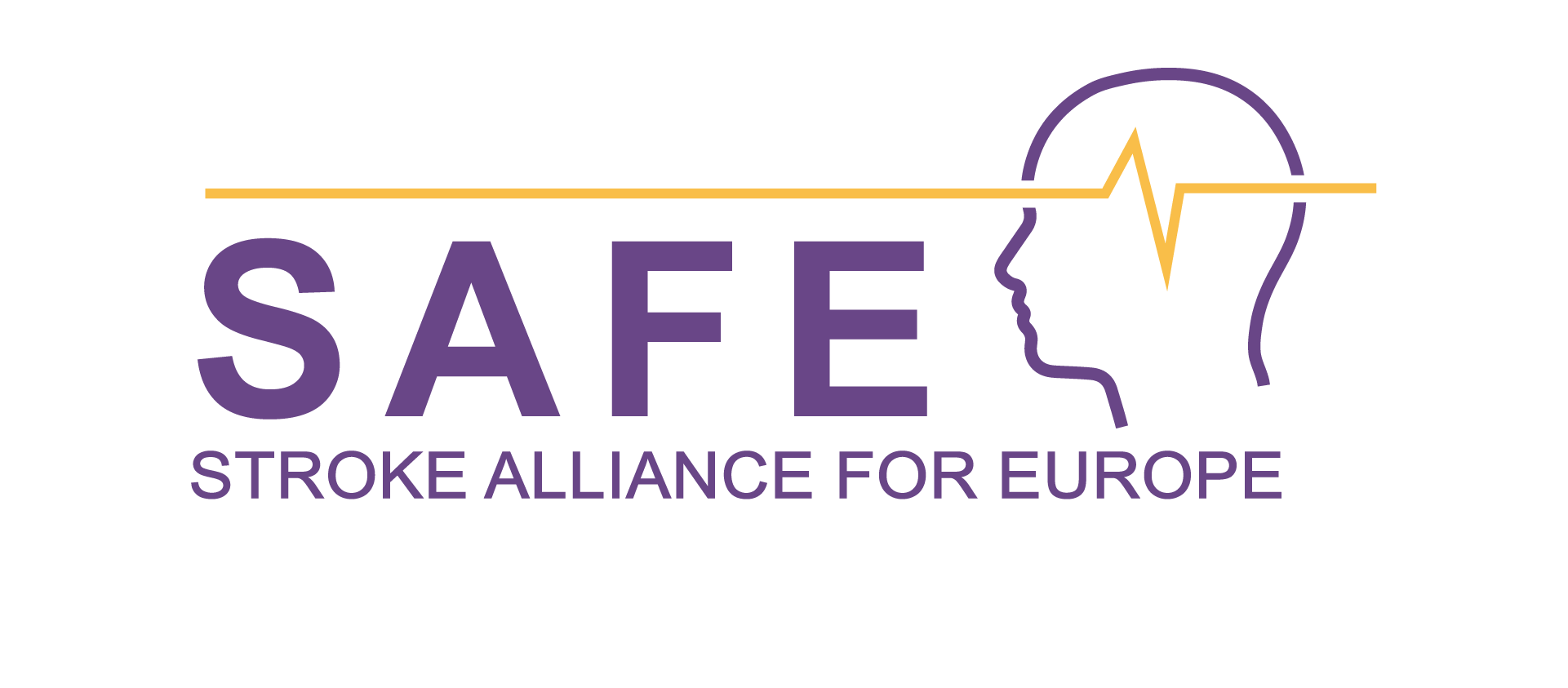



 The event is held under the patronage of Members of the European Parliament [EP]:
The event is held under the patronage of Members of the European Parliament [EP]:

 How will my child develop? How will it do in Kindergarten or school? How do we cope with social challenges and which therapies are best with for our child? The diagnosis “stroke” raises many questions – especially when a child is affected. The three day “Summer Camp” offered families with a child affected by stroke an opportunity for an informative and fun-filled weekend. Experts answered questions, psychologists helped developing new perspectives, singer Patricia Kelly gave an exclusive concert and former world-class Wrestler Alexander Leipold offered sport-activities for the children.
How will my child develop? How will it do in Kindergarten or school? How do we cope with social challenges and which therapies are best with for our child? The diagnosis “stroke” raises many questions – especially when a child is affected. The three day “Summer Camp” offered families with a child affected by stroke an opportunity for an informative and fun-filled weekend. Experts answered questions, psychologists helped developing new perspectives, singer Patricia Kelly gave an exclusive concert and former world-class Wrestler Alexander Leipold offered sport-activities for the children. A stroke affects every aspect of life. Young survivors are even in a special situation. They want to return to work, build or maintain relationships and live an independent life – which is not always possible. In a four-day workshop they had the opportunity to talk to psychologists and doctors and to exchange their own experiences. Word-class Mountainbiker Peter Schermann talked about his return into sports after his stroke.
A stroke affects every aspect of life. Young survivors are even in a special situation. They want to return to work, build or maintain relationships and live an independent life – which is not always possible. In a four-day workshop they had the opportunity to talk to psychologists and doctors and to exchange their own experiences. Word-class Mountainbiker Peter Schermann talked about his return into sports after his stroke.



 Not many people know that children can have a stroke. Even experts like podiatrists or therapists often don’t have sufficient information about the topic. The German Stroke Foundation wants to change this by inviting experts to learn more about child stroke. More than 40 doctors and other experts met in Bavaria in 2019.
Not many people know that children can have a stroke. Even experts like podiatrists or therapists often don’t have sufficient information about the topic. The German Stroke Foundation wants to change this by inviting experts to learn more about child stroke. More than 40 doctors and other experts met in Bavaria in 2019.




